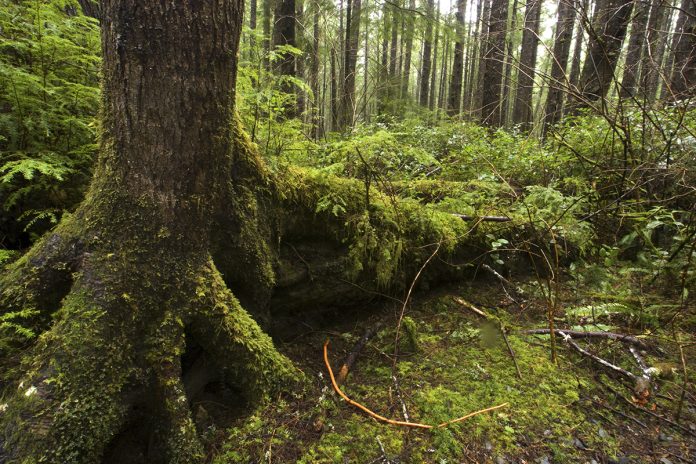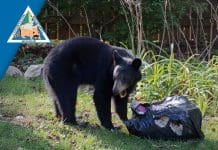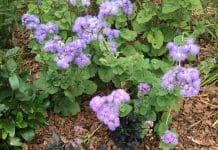
Dear EarthTalk: How much “old-growth” forest is left in the U.S. today and what are we doing to protect it? — Paul Belaire, Chico, CA
Scientists have found it tough to settle on a precise definition for old-growth forests. There’s no single formula to determine what is considered an “old” tree, and growth rates among tree species are varied. Some species have ages at which they can be considered “old.” At 80 years, Gambel oaks are considered old-growth, but for bristlecone pines it is 300 years. In general, old-growth forests are areas of land with layers of undisturbed trees and vegetation. Prior to becoming old-growth, trees enter a stage where they are considered “mature.” Mature forest definitions are even broader and have no specific age.
One categorization system that Wilderness Society scientists have proposed is to base a tree’s maturity on its “biomass”—the amount of collected carbon stored in the tree. One of the reasons that old-growth forests are important is that the trunks and branches of old trees store large amounts of carbon and thus are crucial to fighting climate change because they absorb more carbon than they release into the atmosphere. When these trees burn in wildfires, like the ones that have devastated California in recent years, the carbon is released back into the atmosphere.
In early 2023, the U.S. initiated its first national inventory of mature and old-growth forests. It revealed more than expected, showing that the U.S. Forest Service and Bureau of Land Management collectively oversee over 50,000 square miles of old-growth forests and 125,000 square miles of mature forests. Most of this land is in the West and together covers an area larger than California. Of all of the U.S. forests, only about six percent are old-growth. Decades of logging, development, drought and wildfire have torn through the forests, heavily decreasing their numbers. Some 32 percent of U.S. forests are considered mature, and it’s equally important to protect these so that they can one day become old-growth forests.
Recent actions by the Biden administration have moved to conserve groves of old-growth trees. The proposal would limit commercial timber harvesting in old-growth forests, while allowing logging in mature forests that are not considered old yet. This proposal is somewhat controversial, as many believe that the government should be thinning out forests to reduce wildfire risks. Earlier this year, the Biden administration also reinstated roadless forests protections in Southeast Alaska’s Tongass National Forest, one of the last intact temperate rainforests in the world. Indigenous communities there have been protesting destructive logging and development for years, and this achievement is a result of their efforts.
The Tongass Forest is a prime example of the change that can come through community efforts. The best way to help protect old-growth forests is to speak out. With enough public support, government agencies can be persuaded to enact stronger protection policies. Sign petitions, join protests, write letters to your representatives. Every bit of support can help.
EarthTalk® is produced by Roddy Scheer & Doug Moss for the 501(c)3 nonprofit EarthTalk. See more at https://emagazine.com. To donate, visit https://earthtalk.org. Send questions to: question@earthtalk.org.















